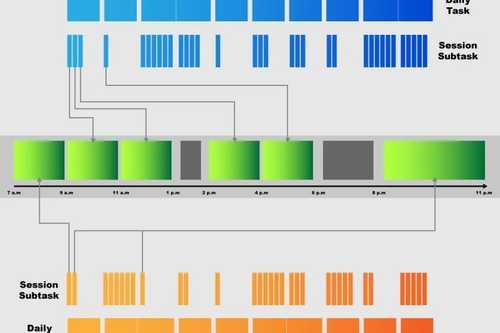Deep Work and Flow: The Best Techniques To Complete Any Project -The Cosmopolitan Mindset
Curated from: cosmopolitanmindset.com
4
Explore the World's Best Ideas
Join today and uncover 100+ curated journeys from 50+ topics. Unlock access to our mobile app with extensive features.
The problem of Deep Work
For deep work, the main problem is multitasking and jumping between projects. As Sophie Leroys analyzed in her study , multitasking results in attention residual , which is the inability of our mind to switch between two tasks instantly. Even if you think you can do it, your mind is not built to perform different jobs alternatively. In other words, if you have two tasks, A and B, when you try to switch from A to B, you still think about task A for some time before being able to focus on task B.
9
92 reads
The problem of Flow
For flow instead, the problem is the mindset since it deals with the inability to track progress, define tasks, and avoiding a fear-breaks. This last problem, in particular, is the pause we take when a task is too complex.
10
83 reads
Split each project in daily tasks
Without good planning, a project advances twice slower. And since the purpose is to speed up the process, divide your projects into daily macro-tasks.
At the beginning of each project, take some time to split it up and approximately plan the work, leaving some blank spaces for eventual delays. Usually, I keep one (1/2 workdays) every slot of macro-tasks (1 to 6 days).
11
63 reads
Split each day in sessions
In any type of work it is essential to have sessions dedicated to work and rest. The subdivision of your workday depends on what you have to do.
Each session contains a particular task, and usually, each of them takes at least half a session. If you perform repetitive tasks, you need to track your time and keep statistics of how much time you spend on each of them, so you can efficiently stack it with the others and take the pauses when needed.
9
48 reads
Set shorter tasks and deadlines
Short deadlines not only make you work harder to finish faster, but they also train you to reach the deep work state constantly. Also, some new tasks may add up to the estimated ones, so you may need those extra hours of work every now and then.
Make every task simple. Each time I have to make a work call, I convince myself it will last for a maximum of 10–15 minutes, even if it never does. In this way, I nullify any barrier my mind develops against that task.
9
41 reads
Make clear and simple goals
- Make every goal traceable in terms of expected length and completion percentage. For example, write 2 out of 10 pages of a book, or run 2 out of 3 times per week.
- Do not use too many words. Mastering goal-setting abilities means also using fewer words to explain what you have to do. Once you read a goal, you should immediately understand the activity without too much effort.
9
40 reads
Use a reliable tracking system
A reliable tracking system is fundamental to switch between one task and another, maintaining flow. The better you track your progress – even in terms of required effort – the greater is the flow you will translate in the following task.
Another useful habit is to check your progress at the end of each day since it gives you the sense of progress that keeps your motivation high between days.
9
41 reads
Match challenges with skills
The most relevant part of flow is the ability to match skills with the complexity of the tasks. Every time you set a task, think about making it challenging enough it doesn’t bore you, but also not so harsh you give up on it.
9
37 reads
Choose the first task correctly
There are two techniques of choosing the first task of the day.
Think about each task as an obstacle to jump, while flow is the power that adds up to your jumping skills.
With the first, you can hope your jumping power is strong enough to make the obstacles fall. With the second instead, you will always have enough jumping power to surpass lower tasks once you collected enough flow. The only problem is the first task, but if you matched its complexity with your skill, it shouldn’t bother you.
9
32 reads
When to Schedule
Scheduling is another problem that will make you lose a lot of time in the beginning.
Some people schedule before the session. This allows them to start knowing what they have to do, so they don’t lose time on scheduling. Still, they spend their free time thinking doing that.
Other people schedule at the beginning of the working week/day. This technique is better for their mental health, but it is worse for productivity since scheduling takes away time from the work session.
9
33 reads
IDEAS CURATED BY
Passionate about self-improvement, personal growth, finance, and creativity. I love to inspire people to become the better version of themselves. Author @ www.cosmopolitanmindset.com
Cosmin Angheluta's ideas are part of this journey:
Learn more about career with this collection
Cultivating a growth mindset and embracing challenges
Developing adaptive thinking and problem-solving skills
Effective learning frameworks and approaches
Related collections
Similar ideas
7 ideas
Read & Learn
20x Faster
without
deepstash
with
deepstash
with
deepstash
Personalized microlearning
—
100+ Learning Journeys
—
Access to 200,000+ ideas
—
Access to the mobile app
—
Unlimited idea saving
—
—
Unlimited history
—
—
Unlimited listening to ideas
—
—
Downloading & offline access
—
—
Supercharge your mind with one idea per day
Enter your email and spend 1 minute every day to learn something new.
I agree to receive email updates
